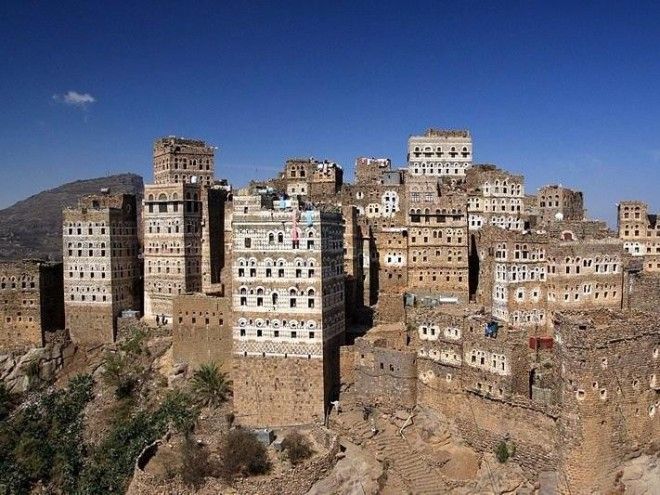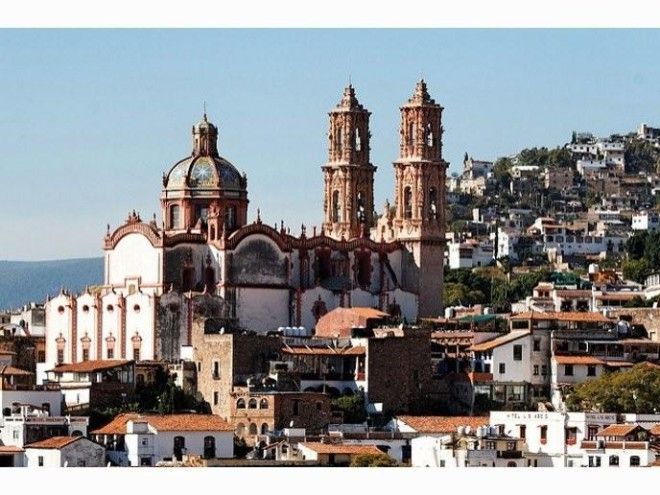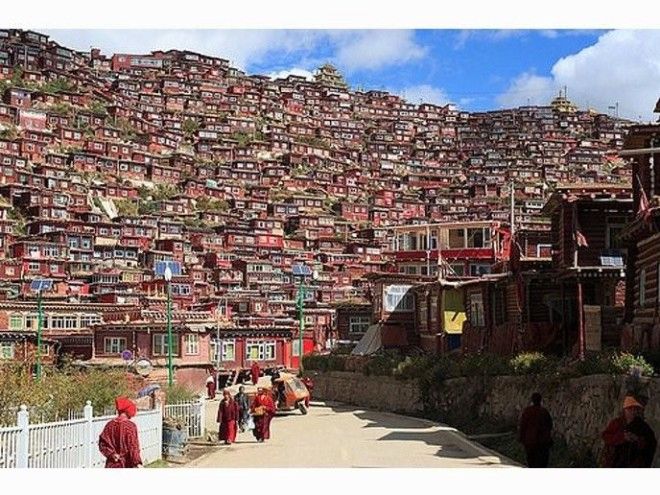From the seaside towns of Italy’s Cinque Terre to the colorful homes of Valparaíso, Chile, these Pinterest-worthy places are what wanderlust is all about: iconic vistas, architectural gems, rich history, and discovering the new, the old, and the in-between. When it comes to these 11 hillside destinations, you’ll want to have your camera ready.
Cinque Terre, Italy

Technically a string of five separate villages (hence the cinque—meaning “five”—moniker), this Italian vacation spot is beloved by both locals and tourists. Located on the coast of the Italian Riviera in the Liguria region, Cinque Terre is known for its rocky beaches, colorful homes, and seaside culture—locals have traditionally worked as fishermen. The five towns—Monterosso al Mare, Vernazza, Corniglia, Riomaggiore, and Manarola—can be traversed by train, by boat, or, in what is perhaps the most popular tourist activity in the area, by hiking trails that run through the scenic cliffs overlooking the sparkling waters.
Santorini, Greece

Though Santorini is a province and not an individual town, white-and-blue hillside villages are emblematic of this Greek island. The destination’s two largest cities, Fira and Oia, are most popular with visitors and offer the quintessential Santorini experience—including the cliffsides that won over viewers of The Sisterhood of the Traveling Pants back in 2005. But the history of this popular tourist destination goes back much further, to when the island’s active volcano helped form its now-iconic crescent shape. Today, tourists flock to Santorini for its romantic sunsets, warm beaches, and renowned culinary scene.
Rocamadour, France

More than just a tourist destination, the hillside village of Rocamadour is considered a sacred site for religious pilgrimages. Located in the south-central region of France about 100 miles north of Toulouse, Rocamadour is home to the Cité Réligieuse complex, a series of spiritually significant sites including the Chapelle Notre Dame, which is home to the Black Madonna shrine, and the ancient Basilique Saint-Sauveur. Rocamadour is also home to La Foret des Singes, a monkey forest where visitors can get up close and personal with the town’s furry residents.
Al Hajjarah, Yemen

Dating back to the 12th century, this village is one of the most visually stunning places in Yemen. Located southwest of Sana’a and west of Manakhah, Al Hajjarah is composed of quarried stone that naturally blends in with the geology of the region’s cliffs. Many of the local homes, most of which are remarkably well preserved, are decorated with intricate stonework, making this destination the crowning example of traditional Yemeni design and architecture.
Èze, France

Nice, Cannes, and Monte Carlo may be the most popular of the French Riviera’s many coastal towns, but Èze is undeniably one of the most beautiful. Perched high above the Côte d’Azur, Èze is part lush tropics and part quaint beach town, a unique synthesis that helps it (literally) stand above the rest. Tourists can relax on the local beach, stroll through the village’s medieval streets, and shop in the many artisanal stores tucked within carved-out caves in the cliffside.
Taxco, Mexico

Taxco’s cobbled streets, silver industry, and quaint squares bring Mexican history to life. Located in the state of Guerrero, Taxco is about 110 miles southwest of Mexico City. The natural composition of the Taxco land made it ripe for mining. Today this “silver town” is known for its one-of-a-kind handmade jewelry, as well as its religious institutions. In addition to the stunning Santa Prisca church, the centerpiece of this hillside village, Taxco is a significant religious pilgrimage destination for its annual Holy Week celebration.
Casares, Spain

One of the off-the-beaten-path villages within the popular Málaga region of Andalucia, Casares has retained its small-town vibe while simultaneously preserving its historical beauty. “Sugar cube” structures (stacked, white boxy houses) are popular in the entire region, but Casares stands out—perhaps because of the castle perched atop its highest hill. Built by the Moors, the castle offers the best views of the area—a true postcard-worthy vista that you won’t want to miss.
Advertising
Positano, Italy

One of the Amalfi Coast’s best-known villages, Positano is a true Mediterranean paradise. With colorful homes built right into the natural cliff, Positano isn’t spread outwards—it’s spread upwards. The town’s scenic main beach is one of the few flat areas, and it anchors the town’s shops, resorts, and homes.
Visitors are encouraged to travel by coach or private transfer, since the small, windy roads present a challenge, especially for non-native drivers. Once in Positano, you won’t need (or want) a car anyway, as the town is connected by a series of steep pedestrian stairways.
Valparaíso, Chile

It’s easy to see why famed poet Pablo Neruda chose to call Chile’s Valparaísohome: the cliffside city presents endless opportunities for artistic inspiration. Valparaíso’s many vibrant, colorful homes surround its main port—Chile’s largest, and one of its oldest, too. Technically not a "town," Valparaíso enjoys a fair level of tourism—especially since being named a UNESCO World Heritage Site in 2002—and has maintained the quaint, village-like culture that keeps locals so deeply attached to their home.
For tourists, no trip to Valparaíso would be complete without a ride in one of the city’s funiculars, a boat tour of the port, and a visit to Neruda’s former home, La Sebastiana. Valparaíso is also known for its street art—most notably, a piece that speaks to the town’s carefree culture that reads, “we are not hippies, we are happies.”
Larung Gar, Tibet

It sounds dramatic, but Larung Gar (also referred to as the Larung Valley), may be one of the most underrated travel destinations in the world. Tucked deep in the remote Garzê Tibetan Autonomous Prefecture of Tibet, Larung Gar is more than a village—it’s also home to the largest Tibetan Buddhist academy in the world. The town is difficult to reach and in no way a tourist destination, but that’s part of the appeal. Intrepid travelers will be dazzled by the red homes, which extend up the hills and surround the institute. These colorful domiciles house the many monks, nuns, and disciples that study in Larung Gar.
Qaqortoq, Greenland

Located along the southernmost tip of the island, Qaqortoq may be the largest city in South Greenland, but it’s far from a bustling tourist destination. More accurately, Qaqortoq is a quaint town filled with local culture, rich Norse history, and sea-hugging hills dotted with brightly colored homes. Tourists can explore the dreamy village easily by foot, and will find plenty of hot springs, wildlife, and friendly locals to keep them occupied. Although the small town is even less visited during the winter, that is one of the best times to go there.
During those months, the snow creates a scene pulled directly from a storybook.

